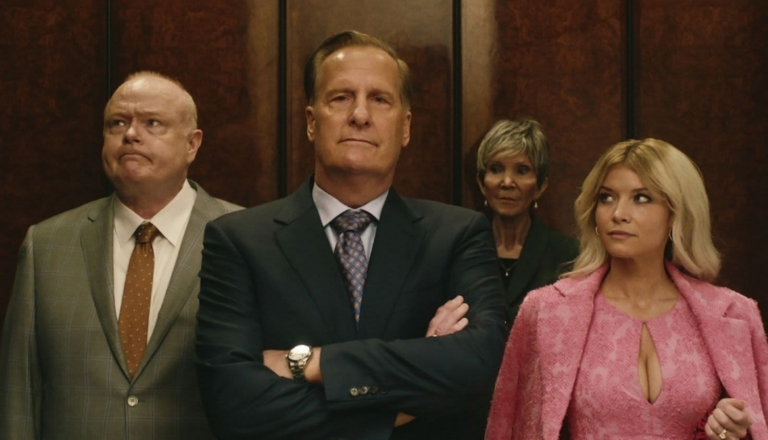
A Man in Full
Talent and intrigue ultimately can’t cloak the truth about this vulgar, crass and graphic drama on Netflix.
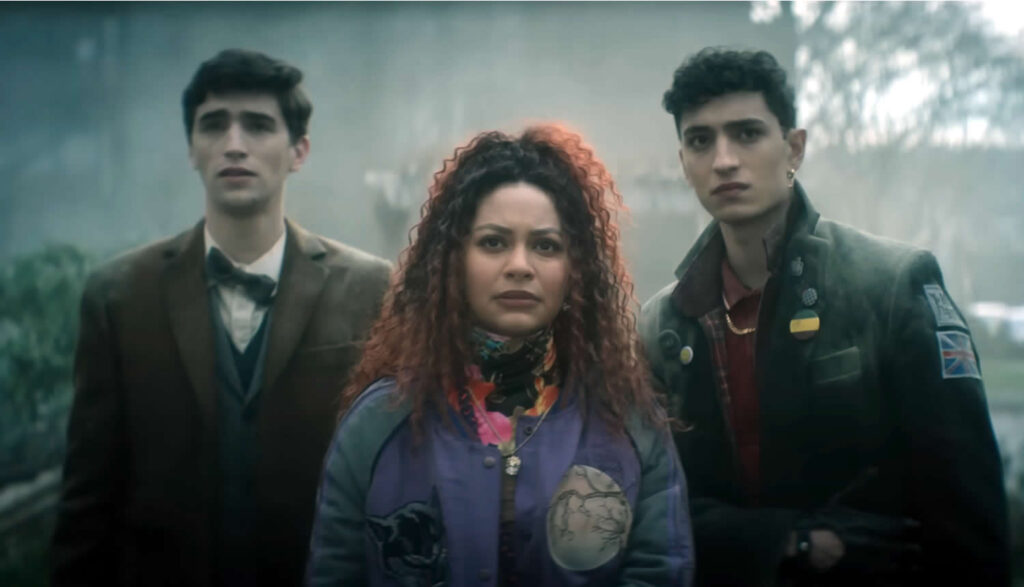
You wouldn’t think there’d be a lot of need for a detective agency for dead people. It’s not like someone would come in and say, “I think someone’s trying to kill me—help me find him!” That ship has sailed already. Also, payment: As they say, you can’t take it with you. Nor, really, can you spend it there, either.
But Edwin and Charles have done a lively business, if you will, detecting for the dead—rounding up wayward souls, chucking out demons and solving an array of postmortem crimes.
And lately, they’ve gotten a bit of help from the other side of that mortal divide. A psychic with the unlikely name of Crystal Palace has been ever so helpful in talking with living witnesses and reading living minds.
But all three have their own issues to navigate. And if they don’t navigate them successfully, there could be you-know-what to pay.
Crystal didn’t start out as the only live girl in the Dead Boys Detectives agency. She began her relationship with Edwin and Charles as a case. Her one-time boyfriend, awkwardly, was a demon named David, who was interested in a very intimate relationship with her. David possessed poor Crystal for weeks before Edwin and Charles managed to kick him out. But some exes don’t take rejection well. And David would like nothing better than to become Crystal’s literally possessive beau again.
Meanwhile, Charles and Edwin are trying to evade Death itself—or, more fairly, the bureaucracy that revolves around her. Death herself seems nice enough. But the Night Nurse, Death’s bureaucratic boss, doesn’t like souls gallivanting outside their proper destinations. Ghosts such as Edwin and Charles aren’t just supernatural abominations: They’re loose ends that the Night Nurse definitely would love to tie up—or snip off.
But the teens have no desire to follow the light to where they’re fated to spend all eternity. Edwin has had a taste of that already: He spent seven decades in hell due to (he says) a “clerical error.” And even though the demon who yanked him to Hades promised it wouldn’t be “all that bad,” Edwin definitely does not want to go back.
So the three of them take on difficult detective cases—doing their best to help both the living and the dead. They might help the living stay alive a little longer. They might help the dead find a little more peace. And the witches and demons and monsters they encounter? Well, the three of them try to exact a little justice when they can—or at least show each of them that following their life of crime and/or evil is a grave mistake.
The Dead Boy Detectives started their, um, lives in the comics. Created by legendary writer Neil Gaiman (the guy behind Good Omens, American Gods and Netflix’s own The Sandman) and artist Matt Wagner, Edwin and Charles got their start in a 1991 Sandman comic, and they’ve been solving creepy cases ever since.
But in Gaiman’s original work, these Dead Boy Detectives are (or were) actually boys—about 12 years old. In the Netflix series, these “kids” would appear to be in their late teens (and played by two actors, George Rexstrew and Jayden Revri, in their mid-to-late 20s).
That’s not the only difference. While both of the boys are “curious about girls” in the originating comics (according to distributor DC), Edwin’s inclinations on television seem to point in a different direction. In the show’s trailer, he seems about to kiss another male character. And early indications suggest the show won’t stop there.
“I’m excited that we could have that much queerness in a show that still feels incredibly accessible to a mainstream audience,” show co-runner Steve Yockey told RadioTimes.com. “That’s something I’m particularly proud of.”
What hasn’t changed? The franchise’s spiritual and supernatural content. Witches, demons and monsters share the screen with ghosts and psychics. And while it’s less sacrilegious than many of Gaiman’s other works—and even more respectful than, say, CW’s long-running Supernatural—there’s still plenty of occult stuff to wade through.
Add to that language, violence and sometimes grotesque imagery, and you’ve got a frightening show indeed.
Dead Boy Detectives does offer some (perhaps unintentionally) strong warnings about how to navigate our own frightening worlds. Think that stranger is kinda cute? Beware, he could lure you into doing some pretty terrible things. Want to pretend to call a demon for a thrill? Yeah, one might just show up.
But the series is also one of many that targets teens in style and story, and yet includes so much problematic content as to warrant an adult, TV-MA rating.
When Charles pushes Edwin to let Crystal to join their little team, Edwin balks. “The living are messy,” he says.
And so, it seems, are their TV shows.
Edwin and Charles rescue psychic Crystal from a demon named David. Case closed, right? Not quite. The demon stole most of Crystal’s memories; until they’re returned, the ghosts can’t shut the book. Plus, Charles would like for Crystal to stick around and work with them.
Their first case? The disappearance of Becky Aspen, a 10-year-old who’s very much alive … hopefully. The catch? She’s been abducted by a witch.
Crystal’s exorcism involves circles filled with magical symbols. It works. But because Crystal let the demon in willingly (she had a crush on him), the psychic is unable to sever ties with David completely or get back the memories he stole from her. When David visits her in what appears to be an alternate dimension, he reminds her that they’ve seen “each other naked,” and then makes threatening statements that could be interpreted as sexual harassment, too. For instance, “I’ve never wanted to be back inside someone so bad.”
We learn that Edwin spent several decades in hell, and we see how he got there. A student at an Edwardian boarding school in 1916, Edwin—targeted perhaps because of his effeminacy—was dragged down to the school basement and offered up as a sacrifice. (The students repeatedly call Edwin a “Mary Ann,” period slang for being effeminate or gay.) Edwin’s harassers are quite surprised when a demon shows up and apparently annihilates them all (they vanish into dust). The apologetic demon tells Edwin that, being a sacrifice and all, “technically, I have to take you to hell,” adding that “it’s not that bad.” (We haven’t heard how Charles was killed yet—only that it was reported as “an act of God.”)
While possessed, Crystal swears and cackles and eats raw fish flesh. When engaged in her psychic abilities, her eyes roll back in her head. When she finds Aspen in her psychic trance, Crystal says that the girl is trapped and “surrounded by black magic and death.” (We see that a gargantuan snake slithers in the space where Aspen’s being kept.) Edwin and Charles warn Crystal that witches are very powerful; one turned a girl into a piece of plastic, Edwin warns. The witch the trio is tangling with lives in a very witchy-looking house, complete with herbs strung from the ceiling and a caged crow. A Ouija game board (along with several versions of Clue) fill the closet of the Dead Boys Detectives office. Someone wears a necklace in the shape of an ankh (an Egyptian religious symbol that looks vaguely cross-like).
Edwin and Charles can get from place to place via jumping into mirrors (though it doesn’t always work perfectly). Iron burns them both and forces them to become visible for “a few ticks.” We hear that people who’ve been close to death or are supernatural can see ghosts. Charles wears a cross earring.
Someone recites what sounds like a magic spell to rid a ghost of a personality-warping mask. A ghost meets death and asks whether reincarnation is real. “Now is when you find out,” Death tells him. Charles and Edwin talk to a ghost who owns a “glowing magical squid.” A “binding spell” is used to get a cat to talk. The opening title sequence features two skeletons engaged in a host of hijinks.
In flashback, we see Crystal and David kiss. David possesses a willing Crystal through some sort of substance that enters her mouth. Charles wants Crystal to stick around because, in part, he seems to have a crush on her. (“We’ve met psychics a lot,” he says, “But none as fit as you.”) Edwin, on the other hand, wants her to leave—due, Charles says, to his own jealousy. (Whether Edwin’s jealous because he has a thing for Charles or just because they’re such good friends is unclear—perhaps even to Edwin himself.)
Crystal rents a room in a building housing, downstairs, a butcher’s shop. When Crystal is found in the shop unexpectedly, the female butcher admits that she thought Crystal might’ve been a “meat robber” or “meat pervert.” Another building tenant is visited, secretly, by Edwin and Charles—who reports that the female tenant’s room is filled with “pictures of guys.”
When Charles sees the witch they must face, she describes her as “sexy.” The witch is obsessed with youth, and she apparently kidnaps girls to keep herself young. “Teen girls have such lovely elasticity with their skin,” she says later. “You can stretch it for yards and yards.”
A ghost is smacked with an iron cane. Edwin suffers a burn on his hand, also from iron. A ghost oozes blood from his mouth, and he fights with Edwin and Charles with a knife. A witch smokes. Someone holds up a dead rat.
Characters use the f-word six times, the s-word four and let loose some other profanities, too (“b–tard,” “a–,” “p-ss,” “d–n”). God’s name is misused three times, and Jesus’ name is abused four.


Paul Asay has been part of the Plugged In staff since 2007, watching and reviewing roughly 15 quintillion movies and television shows. He’s written for a number of other publications, too, including Time, The Washington Post and Christianity Today. The author of several books, Paul loves to find spirituality in unexpected places, including popular entertainment, and he loves all things superhero. His vices include James Bond films, Mountain Dew and terrible B-grade movies. He’s married, has two children and a neurotic dog, runs marathons on occasion and hopes to someday own his own tuxedo. Feel free to follow him on Twitter @AsayPaul.

Talent and intrigue ultimately can’t cloak the truth about this vulgar, crass and graphic drama on Netflix.
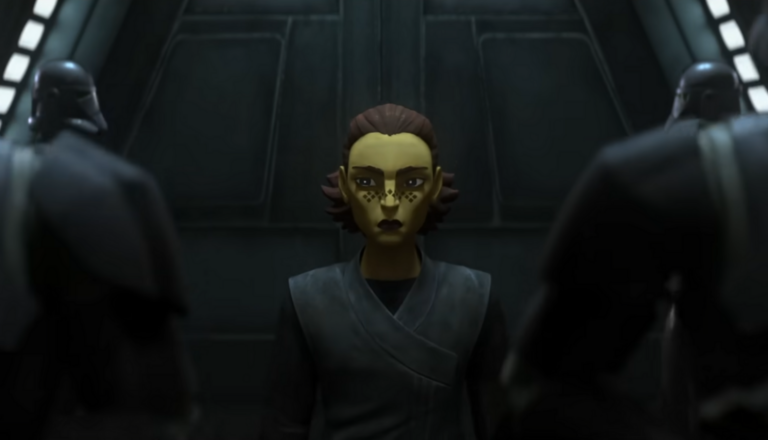
Tales of the Empire is typical Star Wars fare. But in its exploration of what drives folk to the Dark Side, it can get a bit…darker.
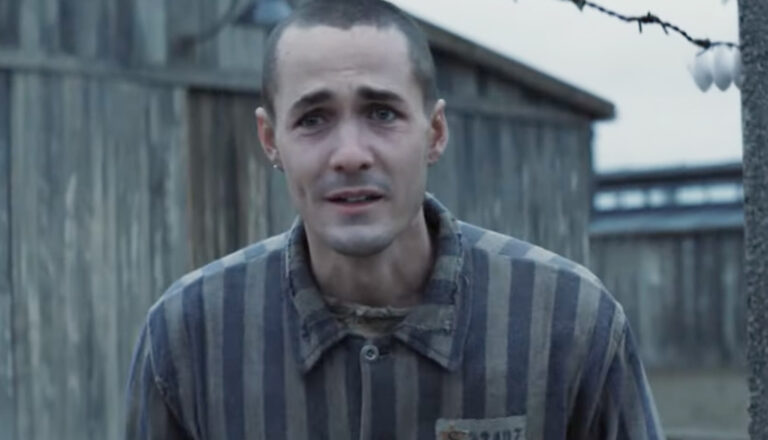
The Tattooist of Auschwitz is a little like its titular character. It’s painful. It gets under your skin. And it just might leave a mark.
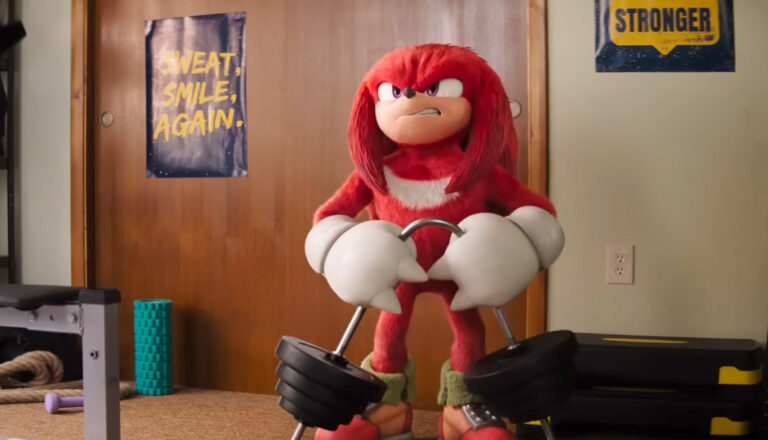
The Sonic spinoff blends explosive adventure and road-trip-buddy-comedy into a fun romp for both kids and diehard fans.